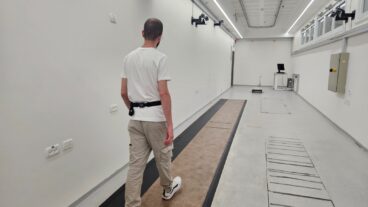CDA-1 is characterized by a medium-to-high deficiency in red blood cell production. It is a rare disease found worldwide, but the largest vulnerable group is the Negev’s Beduin population.A team of Israeli scientists have discovered a gene responsible for the type of anemia found mostly in a number of Beduin in the Negev. The discovery and the understanding the role of this gene’s protein product in the body could provide important clues to other, much more common types of of anemia, as well as to the general mechanisms of blood cell formation.
According to the National Anemia Action Council, at least 3.4 million Americans are anemic, with millions more undiagnosed or at increased risk
The combined effort between scientists at Schneider Children’s Medical Center of Israel (SCMCI), Tel Aviv University (TAU), and the Weizmann Institute of Science discovered gene responsible for the form of the blood disease called congenital dyserythropoietic anemia-1 (CDA-1).
The team’s findings, published in the December issue of The American Journal for Human Genetics, could lead to effective detection and eventually treatment of CDA-1.
CDA-1 is characterized by a medium-to-high deficiency in red blood cell production, and in critical cases patients must receive lifelong blood transfusions. It is a rare disease found worldwide, but the largest vulnerable group is the Negev’s Beduin population, in which consanguinity (marriage among close relatives) is common. The high prevalence of the disease in this Israeli population was crucial to the identification of the CDA-1 gene, the researchers said.
The team studied 45 Beduin treated by Dr. Hannah Shalev at Beersheba’s Soroka Hospital. At first, a team headed by Dr. Hannah Tamary, who works both at SCMCI and TAU’s Felsenstein Medical Research Center, narrowed down the search for the gene to a region on a specific chromosome (#15).
To pin down the gene in that region, they then turned to Weizmann Institute molecular genetics Profs. Doron Lancet and Jacques Beckmann. Both teams, after four years of intensive research, discovered and characterized the previously unknown gene, named CDAN1.
The researchers observed that mutations in this specific gene correlate with the disease. These mutations modify a previously unknown protein, which they named Codanin-1. The protein, they suspect, is present in the nuclear envelope of bone marrow cells, which divide and give rise to red blood cells. Studies of this protein, which may become an important pharmaceutical target similar to erythropoietin (EPO) may yield a better understanding of blood cell maturation and anemia and eventually lead to an effective cure for CDA-1.
According to Dr. Orly Degani, who works with Tamary, “The genomic region within which the gene for CDA-1 was hiding was unusually complex. In some of the patients, a complete DNA segment was missing, but it turned out that this did not cause the disease.”
“We thought fifteen genes were good candidates,” says Dr. Nili Avidan, who works with Beckmann and Lancet. “We began checking them one after the other, from short, defined genes to long, putative ones. This gene was one before the last.”
The researchers observed that mutations in this specific gene correlate with the disease. These mutations modify a previously unknown protein, which they named Codanin-1. The protein, they suspect, is present in the nuclear envelope of bone marrow cells, which divide and give rise to red blood cells. Studies of this protein, which may become an important pharmaceutical target similar to erythropoietin (EPO) may yield a better understanding of blood cell maturation and anemia and eventually lead to an effective remedy for CDA-1.












